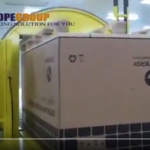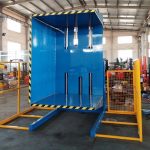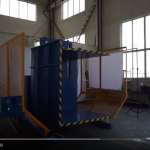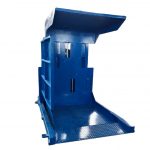Pallet Inverter Guide: Which Model Suits Your Warehouse Needs Best?
- Pallet Inverter Guide: Which Model Suits Your Warehouse Needs Best?
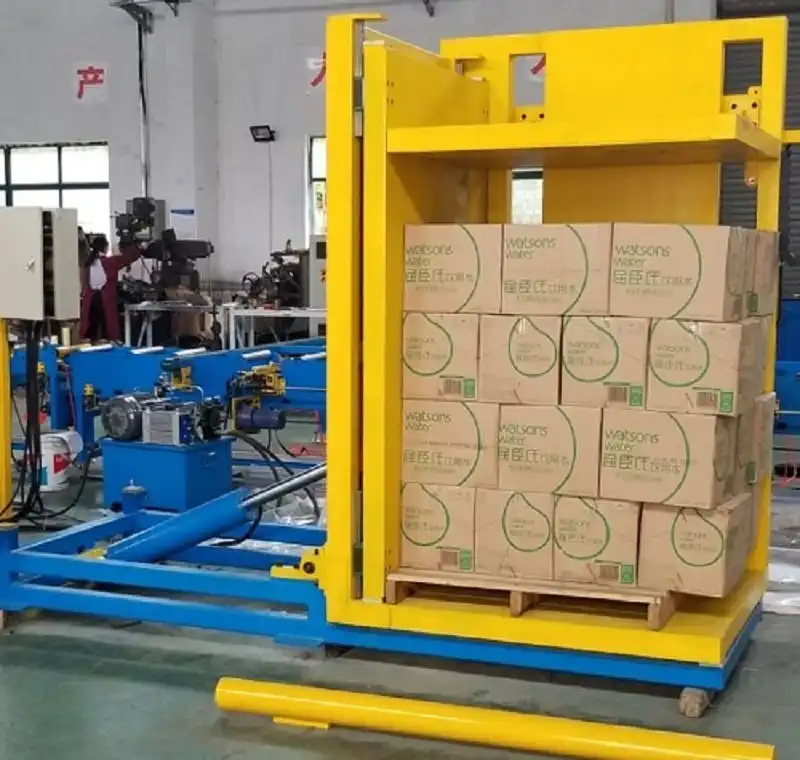
In today’s fast-paced warehousing environment, efficiency is paramount. One often-overlooked piece of equipment that can significantly enhance both safety and productivity is the pallet inverter. By enabling easy pallet exchanges and reducing manual handling, pallet inverters help streamline operations, minimize damage to products, and lower labor costs. However, with many models on the market, choosing the right pallet inverter for your warehouse can be challenging. This guide will help you navigate the options and select the model that best suits your needs.
1. What is a Pallet Inverter?
A pallet inverter is a specialized machine designed to rotate loaded pallets 180 degrees, allowing for the quick removal and replacement of pallets without the need to unload the goods manually. The ability to invert pallets is especially useful for warehouses that frequently deal with damaged pallets, need to exchange pallets, or handle products that must be shipped on specific types of pallets.
Whether you’re dealing with wooden pallets, plastic pallets, or any other type, a pallet inverter can save considerable time and effort. Its primary function is to safely flip the entire load while keeping the goods intact and minimizing the risk of product damage.
Key Features of a Pallet Inverter:
- 180-degree rotation: The core functionality of the inverter is to flip the pallet and its load, making it easy to swap out pallets.
- Hydraulic systems: These inverters are typically powered by hydraulic systems for smooth and controlled movements.
- Adjustable clamps: Many models feature adjustable clamps to handle different load sizes securely.
2. Common Use Cases for Pallet Inverters
Pallet inverters find their place in a variety of industries, from food and beverage to pharmaceuticals and manufacturing. Here are some common scenarios where a pallet inverter proves invaluable:
Damaged Pallet Replacement
Pallet inverters make it easy to swap out damaged or non-compliant pallets without the need to disassemble the load. This is particularly important in industries where pallet integrity is critical to ensuring safe transportation.
Load Stability Improvement
Warehouses that handle fragile goods benefit from pallet inverters as they allow the quick inversion of the load, enabling safe repositioning and securing of products. This process can greatly enhance load stability, minimizing the risk of damage during transit.
Pallet Pooling and Exchanges
In industries that rely on pallet pooling systems (such as CHEP or EPAL), pallet inverters enable the quick switch between supplier and warehouse pallets, reducing downtime and increasing the efficiency of the operation.
3. Different Types of Pallet Inverters
There isn’t a one-size-fits-all solution when it comes to pallet inverters. Depending on your warehouse’s specific requirements, you’ll need to choose a model that suits your operations. Here are the primary types of pallet inverters available:
3.1 Stationary Pallet Inverters
As the name suggests, stationary pallet inverters are fixed machines, typically installed at a dedicated station within the warehouse. These are ideal for high-volume operations where the need for pallet inverting is constant.
- Best for: Warehouses with consistent pallet exchange needs and high-throughput operations.
- Advantages: Heavy-duty, handles large loads, excellent for repetitive tasks.
- Disadvantages: Requires designated floor space, less flexible in terms of mobility.
3.2 Mobile Pallet Inverters
Mobile pallet inverters offer the same functionality as stationary models but with the added benefit of mobility. These machines can be moved to different parts of the warehouse as needed.
- Best for: Warehouses with multiple workstations or those that handle a variety of different products and load types.
- Advantages: Versatile, doesn’t require permanent floor space, can handle various tasks.
- Disadvantages: May not be as robust as stationary models, slower for high-volume applications.
3.3 Manual Pallet Inverters
Manual models rely more on physical effort and are suitable for smaller warehouses or businesses with limited budgets.
- Best for: Small businesses or warehouses with minimal pallet turnover.
- Advantages: Affordable, easy to operate, requires little maintenance.
- Disadvantages: Limited in capacity, slower to operate compared to hydraulic models.
3.4 Automatic Pallet Inverters
For warehouses that prioritize speed and automation, automatic pallet inverters are the perfect choice. These models are fully automated and can be integrated with other warehouse management systems to offer seamless and fast pallet handling.
- Best for: High-volume warehouses, industries with strict deadlines, and operations that require minimal human intervention.
- Advantages: Maximizes efficiency, reduces labor costs, integrates well with automation systems.
- Disadvantages: Higher upfront cost, requires advanced setup.
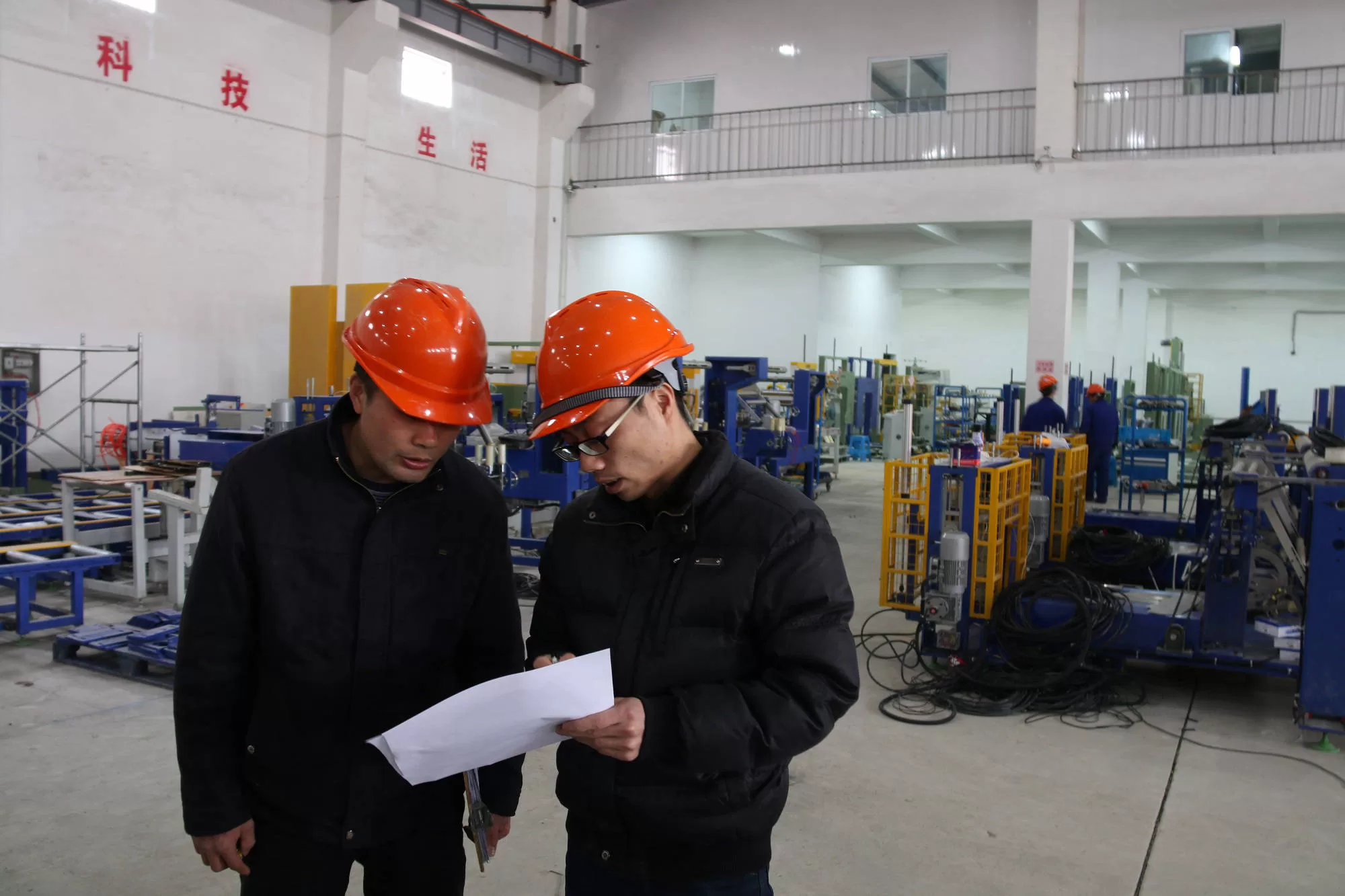
Get Your Best Solution !
4. How to Choose the Right Pallet Inverter for Your Warehouse
Selecting the right pallet inverter involves considering several critical factors that align with your warehouse’s needs. Here are key aspects to evaluate:
4.1 Load Capacity
Before investing in a pallet inverter, you need to determine the maximum load capacity your warehouse deals with. Ensure the model you choose can handle the weight of the heaviest loads in your operations without compromising safety or performance.
4.2 Frequency of Use
Another important factor is how often you’ll need to use the pallet inverter. For high-frequency operations, opting for a stationary or automatic model is ideal due to their durability and efficiency. On the other hand, for low-frequency needs, a manual or mobile model could suffice.
4.3 Floor Space
Space constraints within your warehouse may limit the type of pallet inverter you can install. Stationary models require a dedicated area, while mobile or manual models offer more flexibility in smaller spaces.
4.4 Product Type
Certain products, such as fragile goods or those sensitive to pressure, may require pallet inverters with special handling features like soft clamps or adjustable pressure settings to avoid damage.
4.5 Budget
While it’s easy to gravitate toward high-end models, your warehouse’s budget will ultimately play a significant role in determining the best pallet inverter for your needs. Manual and mobile models offer a more budget-friendly option, while automatic models are more costly but come with higher efficiency and automation features.
5. Benefits of Using a Pallet Inverter
Incorporating a pallet inverter into your warehouse operations brings numerous advantages. Here’s a look at some of the key benefits:
Enhanced Productivity
By automating the process of pallet exchange, pallet inverters significantly reduce the time required to handle goods. This boost in productivity allows warehouses to process more pallets in less time, improving overall operational efficiency.
Improved Safety
Manual pallet handling can lead to employee injuries and product damage, especially when dealing with heavy or awkward loads. Pallet inverters reduce the risk of accidents by eliminating the need for manual lifting and turning.
Cost Savings
While pallet inverters require an initial investment, they offer substantial long-term savings by reducing labor costs and minimizing product damage. In high-volume operations, these savings can quickly offset the upfront expenses.
Versatility
Pallet inverters are highly adaptable and can be used across various industries, from pharmaceuticals to food and beverage. Their ability to handle different pallet types and load configurations makes them a versatile addition to any warehouse.
6. Conclusion: Which Pallet Inverter is Right for You?
Selecting the right pallet inverter comes down to understanding your warehouse’s specific needs and operations. For high-volume warehouses that demand speed and efficiency, an automatic pallet inverter may be the best choice, despite the higher cost. On the other hand, smaller operations may find value in a manual or mobile pallet inverter, offering flexibility and cost-effectiveness.
By assessing factors like load capacity, space, frequency of use, and budget, you can ensure that the pallet inverter you choose will enhance productivity, improve safety, and offer a solid return on investment. As warehouse operations continue to evolve, pallet inverters will remain a vital tool in streamlining logistics and maintaining an efficient workflow.
Ultimately, the key is to match the features of the pallet inverter to your specific operational requirements, ensuring a seamless fit that drives efficiency and supports growth.

Get Your Best Solution !
